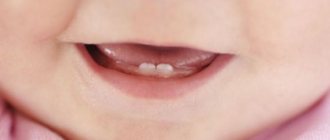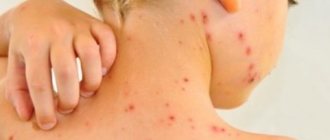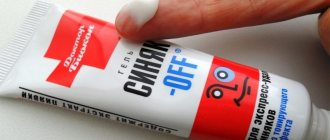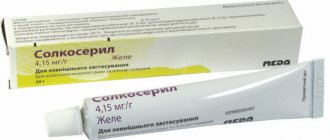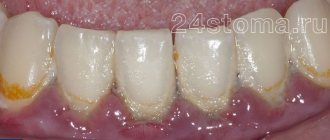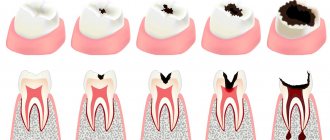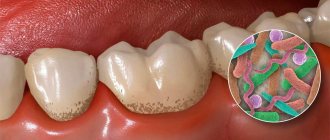Perhaps 50 years ago, brilliant green was considered the best remedy for the treatment of chickenpox. Therefore, today, everyone knows this “magic” remedy, which seems to do the job well. However, the modern world has many different drugs with similar effects, and some of them are colorless and leave no traces. Zelenka, as we all know, leaves green specks that are then difficult to wash off. Is there a colorless green patch with chickenpox? Yes, and we will talk about it in this information article.
Why use brilliant green for chickenpox
An alcohol solution of brilliant green is used to treat exanthema with chickenpox. This is done with the aim of disinfecting the areas of the epidermis affected by the rash, which helps reduce the spread of infection, and also reduces the risk of developing secondary bacterial infections, which can significantly complicate the course of the disease itself and subsequently lead to the formation of deep skin disorders in the form of scars.
Representatives of modern medicine note that brilliant green does not have a therapeutic effect as such, since it does not penetrate the skin layers. Its use in chickenpox can be reduced to a way of marking new foci of exanthema that form every day or two.
Features of the drug "Fukortsin"
Before treating chickenpox with Fukortsin, you should familiarize yourself with its features. This transparent, colorless liquid "Castellani" is used externally and acts in the fight against fungi and bacteria. It has a pronounced phenolic odor and can be red in color, which remains on the skin in the form of pink spots. After treating the ulcers with this medication, the patient may feel a slight burning sensation.
The drug Fukortsin
Fukortsin is used not only for the treatment of chickenpox, but also for the treatment of ulcerative lesions, abrasions, wounds, pustules, erosions and fungal infections. In childhood, it is prescribed with caution exclusively by a doctor, since children have increased sensitivity to the components of the medication. You should also use it with caution because it contains phenol, a toxic component that can harm your baby. The colorless solution "Fukortsina" is used for spot treatment of areas of the skin where there are ulcers.
Colorless antiseptics
Today, pharmaceutical companies offer several antiseptic drugs that are more effective in treating chickenpox rash. Here are some of them:
- Castellani Hefe-B solution is the name of the colorless brilliant green for chickenpox. Although, perhaps, the effect of this drug is somewhat different. In fact, this is the same Fukortsin, but without the characteristic red color, or any color at all. Therefore, using this product, you don’t have to worry about colored spots. The composition of this drug is very different from the composition of brilliant green: 95% ethyl alcohol, water-based phenol, boric acid, resorcinol and acetone. Considering that some components (in particular phenol) are able to penetrate the epidermis, the use of colorless Castellani solution is impossible on large areas of the skin. This can lead to various toxic manifestations: headache, dizziness, weakness, a sharp decrease in blood pressure, etc. The drug, as we noted, is toxic, which precludes its use in children under 12 years of age. This product has good antiseptic properties, and when treating the rash, it slightly dries out the vesicles and also relieves inflammation. This drug is especially active against fungi. Colorless Castellani liquid is recommended to be applied 2-3 times a day to areas of the epidermis affected by exanthema using a cotton swab and swab. In case of individual sensitivity to the constituent components of the drug, the use of the product is not recommended;
- An alcohol solution of salicylic acid is another colorless analogue of brilliant green for chickenpox. It is a solution of salicylic acid and ethyl alcohol. Given the difference in the ethyl alcohol/salicylic acid ratio, it is recommended to start using a 1% solution, since a 2% solution can cause serious chemical burns. This drug has a pronounced antifungal, antibacterial and antimicrobial effect, dries out chickenpox vesicles and slightly relieves inflammation. It is forbidden to treat healthy areas of the skin with this product! It is necessary to treat chickenpox rashes with this remedy 2-4 times a day, using cotton swabs or swabs (preferably cotton swabs). Side effects: burning in local areas of the skin, peeling, redness. It is not recommended to use salicylic alcohol if you are hypersensitive to the constituent components of the drug;
- Medical alcohol 60%. Considering that the alcohol solution of brilliant green is 99% ethyl alcohol 60% and 1% antiseptic from the group of anilic dyes, it can be argued that brilliant green is alcohol with the addition of a dye. Therefore, ethyl alcohol 60% is a real colorless analogue of brilliant green for chickenpox;
- Tea tree essential oil. This remedy is obtained by distilling melaleuca (tea tree) leaves with water. Essential oils contain more than 100 types of terpenes (hydrocarbons), and some of them are serious antibacterial components. Due to this, tea tree oil has antibacterial, antiviral, antimicrobial and antibacterial effects. Considering the plant origin of this product, it can be used at any age. Today, tea tree oil is available in different concentrations, so before purchasing, you need to find out what concentration of oil you need (for the treatment of chickenpox rash, a 100% concentration will have the best effect);
List of colorless drugs for chickenpox
Pharmacology can offer various colorless medicines for treating chickenpox rashes. Available in liquid, ointment or cream form. The choice of a transparent medicine depends on the form of the disease, the number of bubbles, contraindications and the age of the patient.
Remember! It is strictly prohibited to use any medications without consulting a doctor!
Liquid solutions
A white transparent remedy for chickenpox is most often used in the form of a lotion, which allows you to treat each pimple point by point (for example, with a cotton swab):
- Calamine. The drug is available in the form of gel, ointment and lotion. Has an anti-inflammatory effect, eliminates itching and burning. Due to the absence of alcohol, it does not irritate or dry the skin and promotes rapid recovery of affected areas. The composition of the medicine includes zinc oxide and calamine (basic components), glycerin, liquid phenol. The drug has no contraindications or age restrictions and does not cause allergic reactions. When treating chickenpox, it is recommended to apply the solution 3 times a day (use until the rash completely disappears).
- Salicylic alcohol. A clear solution based on ethyl alcohol and salicylic acid has an antiseptic effect. The medicine dries the skin, and upon application there may be a slight burning sensation and discomfort. Apply locally (2 times a day) to the affected areas, avoiding contact with areas untouched by the rash.
- Tsindol. A white liquid based on zinc oxide will help get rid of chickenpox. The product alleviates the condition by eliminating pain and irritation, and also prevents the spread of infection by forming a protective film on the skin. The rash needs to be treated with mash several times a day. Apply locally without affecting healthy skin. Leave to act for a couple of hours, then rinse with warm water and dry with a towel. The use of the suspension is not recommended for people with hypersensitivity to zinc. The effect of the drug is noticeable after the first days of use.
- Castellani Gefe-B (colorless brilliant green for chickenpox) prevents the spread of the virus. The product has an antimicrobial effect due to its constituent components: phenol, ethyl alcohol, resorcinol, boric acid.
An important feature of the application: Castellani for chickenpox is the possibility of applying the drug to the mucous membranes (treat each pimple, but do not smear large areas). The medicinal solution is contraindicated: - people with intolerance to one of the ingredients; — pregnant and lactating women; - children under 12 years old. A clear remedy will help against chickenpox if used regularly (3 times a day) until the rash completely disappears. - Tea tree oil. The natural remedy is no worse than medications. Application is possible in the form of oil or balm. It is necessary to treat the skin several times a day; it is not necessary to rinse off. The oil promotes skin hydration, rapid healing of wounds and forms an invisible film that prevents the penetration of bacteria.
In the treatment and elimination of the symptoms of chickenpox, it is possible to use not only liquid solutions, but also creamy preparations. Doctors recommend paying attention to ointments, creams and gels. The products are more convenient to apply and also do not leave marks on clothes.
Ointments and creams
Before using any medications, you must read the instructions. Not every colorless product is suitable for a child or a pregnant woman. Among the clear-colored drugs for chickenpox, the most commonly used are:
- Zinc ointment. Colorless ointment for chickenpox is recommended by specialists for all ages. The product has almost no contraindications, but when used, it dries out the skin greatly. In people with hypersensitivity to zinc it causes irritation and itching. When applied, it forms a transparent film that serves as a barrier to viruses and bacteria.
- Acyclovir. White ointment, acting directly on the smallpox virus, prevents its spread. It is recommended to apply the ointment up to 6 times a day; the effect becomes noticeable after several days of use.
- Viferon.Ointment of transparent color, without a pungent odor. The main component is interferon, which acts on the virus and also relieves itching and irritation from the skin. It should be used 4-6 times a day, applying a thin layer to the affected areas.
- Poksklin. The product is available in the form of a gel based on aloe vera, chamomile and lavender. The drug moisturizes the skin, relieves inflammation, and has a calming and cooling effect. When applied, it is quickly absorbed and leaves no traces. Apply to the rash several times a day until completely cured.
- Fenistil gel. The peculiarity of the product is an anesthetic effect, but it also has an anti-inflammatory effect. Apply up to 4 times a day in a thin layer. Before use, read the instructions, as the drug has a number of contraindications.
Chickenpox sprays
Sprays do not leave marks on clothes and body, are quickly absorbed and eliminate discomfort. Thanks to convenient bottles, it is easy to use in any situation. It is recommended to spray the products at a distance of 20 cm (at least 3 times a day). Among the transparent drugs are:
- Floceta. The colorless drug has an anti-inflammatory and antimicrobial effect, relieving itching and cooling the skin. The product is based on natural ingredients: chamomile, calendula and a complex of active biological substances.
- Epigen. Recommended for use on mucous membranes. The product promotes the production of interferon and rapid healing of wounds. Relieves pain and accompanying symptoms of chickenpox. There are no contraindications for pregnant and lactating women.
- D-Panthenol. The drug will help get rid of itching and promote rapid healing of the affected areas. Does not have an antimicrobial effect.
Cost of colorless and effective products
All of the above products can be purchased in city pharmacies or from online sources. The price of a colorless green solution for chickenpox, Castellani Gefe-B solution, varies from 150 rubles to 250 rubles per bottle, depending on the place of purchase.
An alcohol solution of salicylic acid 1% costs a penny, ranging from 20-30 rubles per bottle.
It is almost impossible to buy medical alcohol 60% in a pharmacy today.
The most expensive remedy is tea tree essential oil. The price of 100% essential oil ranges from 900 to 2000 rubles, depending on the volume of the bottle and quality, as well as the place of sale.
Colorless liquids for treating rashes
The rash in patients with chickenpox can be lubricated with the following liquid products:
- Calamine lotion. This product contains the mineral calamine and zinc oxide, which helps relieve itching, cool and dry the skin a little, and protect blisters from bacteria.
- Salicylic alcohol. Treatment with such a medicine helps dry out the vesicles and accelerate regeneration processes in the skin.
- Suspension Tsindol. This drug, which is based on zinc oxide, effectively relieves itching, provides drying and faster healing of blisters. It is inexpensive, so it is in great demand among parents.
- Tea tree oil. Treatment with this product will protect the skin affected by chickenpox from bacteria and reduce the severity of the inflammatory process.
- Potassium permanganate solution. This product is prepared from crystals of potassium permanganate, thoroughly stirring them in water until a pale pink liquid forms. The solution is lubricated into the bubbles for an antiseptic effect.
- Baking soda solution. Mix soda with warm water and treat inflamed skin to relieve itching and dry out the rash.
Folk remedies for chicken rash
Traditional medicine is often used for chickenpox. There are various prescription medications for treating the disease.
Facilities:
- You can strengthen your immune system by drinking honey and lemon every day.
- Rubbing with a soda solution (a spoonful of soda in a glass of water) will help cope with severe itching.
- Blueberries will help you quickly cope with the disease. They are consumed in pure form or drunk with blueberry juice.
- Drinking a tablespoon of celery juice three times a day will help you cope with the disease faster.
- To reduce inflammation and relieve itching, take baths with herbal decoctions - chamomile, nettle, yarrow.
On the Internet you can find various traditional medicine recipes for the treatment of chickenpox. This treatment should be used with caution to avoid allergic reactions.
Ointments and creams for chickenpox
Treatment of chickenpox rashes can be carried out using the following means:
- Gel Fenistil. This drug from the group of antihistamines quickly reduces itching, soothes the skin and eliminates swelling.
- Zinc ointment. This medicine dries and disinfects skin with blisters.
- Calamine cream. The product is similar to the liquid form, so it copes well with itching and also protects the skin from pathogens.
- Acyclovir ointment. This antiviral drug inhibits the proliferation of the chickenpox pathogen, causing the rash to heal faster.
- Gel PoxClean. The basis of this product is aloe vera extract, so the drug effectively relieves inflammation, reduces swelling of the skin and eliminates itching.
- Gel Viferon. This interferon-based medicine has an antiviral effect and also has an immunomodulatory effect.
What can be used on a baby?
Chickenpox most often develops in children older than one year, since infants in the first months of life are protected by their mother’s antibodies (if the mother had chickenpox in childhood), and also have little contact with other children. However, chickenpox does occur in infants older than 6 months.
To treat blisters in such infants, the following colorless products are allowed to be used:
Causes and consequences of the first symptoms of chickenpox
Chickenpox symptoms appear quite unexpectedly, especially if the parents of the infected child are not prepared to face the infection. Most often, a child is exposed to the virus in the community of a preschool institution. There it spreads very quickly, through airborne droplets.
Moreover, adults can also catch chickenpox. After all, in crowded places and enclosed spaces there are often many unprotected people who have not previously had type 3 herpes.
Is it possible not to treat the skin?
The use of local remedies for chickenpox is not a prerequisite for treating such an infection. If you take care of hygiene (bathe your child several times a day, change clothes, wash your hands) and avoid scratching the blisters, the chickenpox rash will heal without a trace and without any treatment. However, if the rash is very itchy and causes great discomfort to the baby, or there is a high risk of infection in the wounds, skin treatment is desirable, because it will help alleviate the condition of the baby and prevent bacterial complications.
You can learn even more about chickenpox from Dr. Komarovsky’s program.
- Treatment
- How to lubricate a rash
- Colorless products
- From scars
- Calamine
- Tsindol
- Acyclovir
- PoskKlin
- Fukortsin
specialist with medical education
auto RU
You can rate the article here
Share this article with your friends if you liked it
The online publication “About the Baby” is registered by the Federal Service for Supervision of Communications, Information Technologies and Mass Communications (Roskomnadzor).
Certificate EL No. FS77-77297 dated December 25, 2021. Editor-in-Chief - Lazutin V.S. Founder: MEDIALIGHT LLC.
Messages and comments from site readers can be posted without prior editing. The editors reserve the right to remove them from the site or edit them if these messages and comments constitute an abuse of freedom of media or a violation of other legal requirements.
All rights to materials published on the site belong to the editors and are protected in accordance with the legislation of the Russian Federation. The use of materials published on the site is permitted only with the written permission of the copyright holder and with a mandatory direct hyperlink to the page from which the material was borrowed.
Doctors recommend lubricating chickenpox rashes with brilliant green to prevent the spread of infection. The solution only has a disinfecting effect, leaving green traces. When faced with the disease, older patients try to find a colorless remedy for chickenpox. Pharmacies offer various topical preparations that do not stain the skin, which not only have a drying effect, but also alleviate the patient’s condition.
Treatment approaches
The choice of remedies for chickenpox depends on the severity of the disease in the patient, as well as the available indications and contraindications for the use of various medications. There is no need to take any medications for chickenpox in cases where the disease proceeds without complications and without serious symptoms.
However, doctors believe that the number of adverse effects can be reduced by treating the elements of the rash with sprays, ointments, fucorcin, potassium permanganate, brilliant green and other external agents.
In addition, attending physicians may prescribe other medications aimed at combating the symptoms of an infectious disease:
- medications with a sedative effect: Calamine, Tsindol, etc.;
- antiviral drugs for chickenpox that have a pronounced antiherpetic effect, for example, Acyclovir, Miramistin;
- antihistamines: Loratadine, Erius;
- immunomodulatory medications: interferon preparations, Cycloferon, etc.
It should be noted that in each specific case of illness, only the attending physician determines the necessary medications for chickenpox, based on data from questioning and examination of the patient.
